The Work of the OICG: Foundations Laid - Part I
Envisioning an Equitable, Inclusive Connected America
Overview
The National Telecommunications and Information Administration (NTIA) established the Office of Internet Connectivity and Growth (OICG) with a dedicated purpose to realize digital equality and universal broadband access. OICG's efforts are supported by tools like the National Broadband Availability Map (NBAM). Furthermore, OICG collaborates with over 25 federal agencies, convening stakeholders across various sectors to inform program priorities and design. Through its work, OICG promotes digital equity and invests in partner communities by providing outreach, communications, Technical Assistance, and resources to expand broadband access. OICG's multifaceted approach contributes to the deployment and utilization of broadband technology, underpinning sustainable economic growth, improved education, public safety, healthcare, and the advancement of national priorities.
OICG facilitated:
This also includes a myriad of other resources through 2023. OICG also facilitated several one-on-one meetings to assist eligible entities through the process of successfully applying for funding and implementing their awards and meeting programmatic goals.
The Technical Assistance Program provides guidance to grantees on how to use their funding efficiently and promote project implementation success, as well as providing federal grants compliance support. Over the last year, OICG consolidated its Technical Assistance resources for grantees and eligible entities into a one-stop-shop in a Technical Assistance Hub on the BroadbandUSA website. This resource hub includes information such as FAQs, NOFOs, and programmatic resources. The BroadbandUSA website is maintained by OICG and provides programmatic information to stakeholders seeking to expand Internet connectivity and promote digital equity and inclusion. OICG also hosts local and regional coordination workshops that offer opportunities to convene broadband stakeholders across the country and share information and best practices.
Webinars
To efficiently distribute information to large groups of interested parties, OICG consistently engaged with a range of stakeholders including states, territories, Tribal governments, community anchor institutions, industry members, and underserved and minority communities and institutions on issues relevant to them. Throughout 2023, OICG designed and hosted a variety of webinars to provide concise information on program-related aspects of broadband infrastructure and policy and programs relevant to the general public. These resources assist states and localities in navigating the NTIA grant programs and inform stakeholders of important steps NTIA is taking to support and implement the vision of Internet for All.
OICG held
30
Webinars for Stakeholders throughout 2023
8,856
Cumulative total of registrants
4,880
Attendees
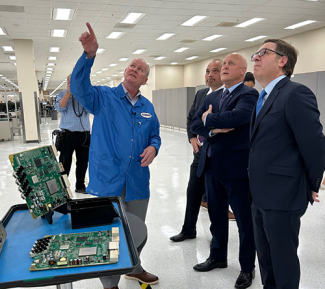
These OICG-hosted stakeholder webinars were a combination of public meetings, meetings for awarded grantees and those held specifically for groups representing potential grant program applicants. Topics varied widely across OICG’s scope of work, including closing the digital skills divide; cybersecurity and supply chain risk management; leveraging digital equity Technical Assistance resources; BIP one-year anniversary celebration; subrecipient monitoring; how local governments can get involved in the Broadband Equity, Access, and Deployment (BEAD) and Digital Equity programs; and how schools and libraries are partnering on digital equity for students.
Highlights Included
- The Internet For All Public Webinar Series - Introduction to the BEAD Challenge Process recorded the highest attendance for a webinar this year. This event provided critical information about the BEAD state challenge process and how local governments, nonprofit organizations, and broadband service providers may participate. This hour-long webinar had a total of 1,316 registrants and 763 live attendees.
- The Tribal Broadband Connectivity Program (TBCP) Round 2 Webinar Series began in August 2023 to educate all potential eligible applicants about the new NOFO and how they can prepare high-quality applications. Across eight webinars, this series covered the following: a general overview of the NOFO, mapping requirements, project narratives and budget narratives. There was a total of 678 registrants and 365 live attendees throughout the series.
NTIA Requests for Comment
On March 2, 2023, NTIA issued a Request for Comment (RFC) that sought broad input and feedback from interested stakeholders on the Digital Equity Act Programs. NTIA specifically solicited comments on the design and implementation of two components of that grant program: the $1.44 billion State Digital Equity Capacity Grant Program and the $1.25 billion Digital Equity Competitive Grant Program.12 Through the RFC process, NTIA received more than 250 submissions reflecting the voices of more than 400 stakeholders.
To help bolster participation in the Digital Equity Act RFC, the Digital Equity team held four public virtual listening sessions in April 2023.
These virtual listening sessions drew in over...
790
Cumulative Registrants
420
Live Attendees
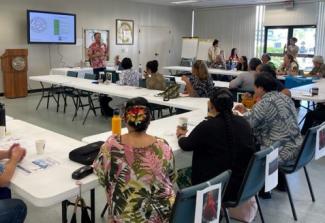
who provided general feedback on the Digital Equity Act programs, as well as specific comments on the following topics: assessing digital equity plans; ensuring equity in the BEAD program; workforce and subcontracting opportunities; measuring for success and transformative impact; and the State Digital Equity Competitive grant program.
In April 2023, NTIA sought feedback from the public on the BEAD Challenge Process Policy Notice to provide Eligible Entities with additional guidance on how to design and conduct their BEAD challenge process and a Model BEAD Challenge Process. Sixty-one stakeholders filed comments.13
On July 5, 2023, NTIA issued an RFC that invited all interested stakeholders to provide input on any exemptions from the Uniform Administrative Requirements, Cost Principles and Audit Requirements for Federal Awards (2 CFR Part 200) (Uniform Guidance) that might help facilitate the implementation of the BEAD Program.14 This allowed stakeholders to voice comments on issues and questions relating to the relationship between the Uniform Guidance and the BEAD Program.
On June 2, 2023, NTIA issued an RFC for the public and other federal agencies to add 65 questions to the November 2023 edition of the U.S. Census Bureau’s Current Population Survey (CPS).15 This collection of questions is known as the NTIA Internet Use Survey and is referred to as the CPS Computer and Internet Use Supplement. NTIA has sponsored 16 such surveys since 1994. Data from the NTIA Internet Use Survey informs policies aimed at achieving digital equity so that the Internet’s benefits are accessible to everyone in America.
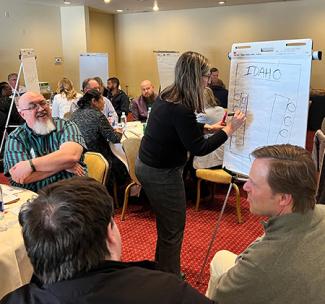
In 2023, NTIA developed a program evaluation framework for the BEAD, Digital Equity and Middle Mile Programs. The program evaluation strategy builds on a logic model, conceptual framework, evidence review, and dashboard of economic indicators developed in response to the ACCESS BROADBAND Act and presented in Federal Broadband Funding Reports. This body of work identifies the metrics and methods used in research and practice to evaluate the economic impacts of broadband expansion over the last two decades. OICG also relies on feedback from the March 2023 RFC which presented a specific series of questions focused on program measurement, evaluation and reporting that received over 230 comments. Informed by the ACCESS BROADBAND Act work and feedback from the RFC, OICG is identifying key performance indicators (KPIs) across broadband access, affordability, equity, adoption and sustainability for broadband programs. These KPIs will help assess desired outcomes and impacts over a program’s period of performance across categories that include, but are not limited to, digital equity and inclusion, economic and workforce development, education, healthcare, civic and social engagement, and delivery of other essential services.
OICG staff led the federal government’s interagency coordination efforts to promote a whole-of-government approach to connect everyone to affordable, reliable, high-speed Internet; align on common policies and practices; and fulfill statutory coordination activities.
Maximizing federal support, reducing duplication, and promoting efficient use of funding:
To promote the effective use of federal funds, NTIA, the U.S. Department of Agriculture (USDA), the U.S. Department of the Treasury (Treasury), and the U.S. Federal Communications Commission (FCC) met regularly under the auspices of interagency coordination Memoranda of Understanding (MOU) signed in 2021 and 2022.16 NTIA led the development of a standard high-level deduplication process across projects funded by the parties to the MOU, and continues its policy of information sharing to assist in the most effective deployment of federal broadband dollars.
NTIA also coordinated with FCC as they developed the Broadband Funding Map to reduce or prevent duplication of federal funding with NTIA’s obligations under the ACCESS BROADBAND Act. This interagency coordination also ensured that federal agencies were aware of their obligations to contribute relevant data to the map. This map supports BEAD and other federal funding programs by providing a public facing tool that overlays information about federal funding commitments to deploy broadband services onto the broadband availability data being collected as part of the FCC’s Broadband Data Collection.
Supporting the success of NTIA’s grant programs and stakeholders by serving as a liaison with interagency colleagues:
To promote greater coordination across the country with regional and state-level federal counterparts, OICG scheduled “meet and greets” between regional or state-level agencies, NTIA regional staff, and Federal Programs Officers (FPO) to build relationships and support states and territories in developing their BEAD and Digital Equity plans. This included facilitating interagency briefings and inviting federal agencies to participate in stakeholder gatherings, including the local coordination events. OICG also answered questions from federal agencies about NTIA’s grant programs and processes to promote awareness and encourage consistency.
Collecting interagency data for Federal Broadband Funding Report and Dashboard:
To promote awareness of federal broadband funding trends and economic impacts, OICG published the annual “2022 Federal Broadband Funding Report and Dashboard,” which highlights investments in federal broadband and Universal Service Fund (USF) programs in 2021. OICG began development of the forthcoming 2023 report in coordination with 12 federal agencies covering over 68 programs that funded broadband in 2022. The report summarizes the federal broadband investment landscape, outlines the current state of measuring investments and connection across federal broadband and USF programs, provides recommendations to improve efforts to track broadband spending and outcomes, and provides a framework for analysis of economic impact. The development of the annual Federal broadband Funding Report and Dashboard supports OICG’s overall program evaluation work and identifies the metrics and methods used in research and practice to evaluate the economic impacts of broadband expansion over the last two decades.
NTIA also partnered with the Census Bureau to develop the ACCESS BROADBAND Dashboard, which includes a series of maps showing different broadband access and adoption measures as well as local and regional economic outcomes that research suggests could be influenced by expanding access to broadband.
In April 2023, OICG facilitated the annual update of the BroadbandUSA Federal Funding Website. The Federal Funding Website is a “one-stop” site for federal broadband funding opportunities across the federal government. The site includes over 80 programs across 13 agencies. The information collected as part of the annual update informs the development of the Federal Broadband Funding Report.
Permitting:
NTIA has significantly increased its capacity to address environmental and other permitting requirements associated with its actions. Over 2023, NTIA reviewed and revised its environmental compliance approach, and proposed new streamlining measures and programmatic tools to increase efficiency and reduce permitting risks to broadband deployment. The Department of Commerce is grateful for the Federal Permitting Improvement Steering Council’s (FPISC) support and funding for its permitting and environmental review priorities for its offshore wind, broadband, and semiconductor manufacturing programs.
NTIA received FPISC Environmental Review Improvement Fund (ERIF) funding for hiring and data-sharing efforts supporting broadband permitting. FPISC funds supported the addition of environmental and permitting staff, including National Environmental Policy Act (NEPA) specialists that started in November 2023, permitting coordinators, and geospatial information system (GIS) permitting specialists. NTIA also received ERIF funding to distribute National Broadband Availability Map (NBAM) licenses to federal permitting agencies, Tribes, and states, and developed a suite of GIS permitting tools to support federal agency colleagues in planning for anticipated surges in broadband permit applications. In addition, NTIA has developed permitting and environmental templates within NBAM to help users to identify potential permit requirements and environmental factors for NEPA reviews.
In 2023, NTIA laid the groundwork for a significant permitting win early in 2024. In October 2023, NTIA requested that the Advisory Council on Historic Preservation amend its 2017 Broadband on Federal Lands program comment to enable its application for Internet for All grant projects – and use by all other federal agencies – both on and off Tribal lands. NTIA supported the Council in conducting December consultation meetings and incorporating public comments into a March 2024 amendment that retitled it as the “Federal Communications Projects Program Comment.”
NTIA also developed and began implementing an Interagency Broadband Permitting Coordination strategy to promote awareness of anticipated surges in permitting applications and to establish relationships and protocols to handle project-specific issues as they arise. Since September of 2023, NTIA has held interagency broadband permitting meetings in each BEAD region with the federal permitting agency real estate and environmental review staff for each state, to discuss implementing state (or territory) based “broadband permitting roundtables” as BEAD progresses. These meetings have ensured awareness of Internet for All programs and infrastructure types and introduced NTIA’s state FPOs to the federal officials permitting projects in their states.
Over the past year, NTIA connected data sets across the NBAM, NTIA Internet Use Survey, the American Community Survey, and the Census Bureau to create the ACCESS BROADBAND Dashboard. Released in February 2023, the ACCESS BROADBAND Dashboard shows indicators of broadband availability and adoption alongside economic indicators that research suggests could be impacted by broadband expansion. The map displays statistics on employment, small businesses, wages and income, poverty, home values, population change and migration, educational attainment, and gross domestic product.
Over the past year, NTIA developed and published tools in the NBAM to support its programmatic implementation. As of December 2023, 48 states and five territories used the NBAM platform. The tools within the NBAM include the NTIA Public GIS Data Site, the BEAD broadband availability map, Permitting and Environmental templates, and the Eligible Entity Planning Toolkit.
- The NTIA Public GIS Data Site provides geospatial data published by NTIA including data, web maps, and applications covering grant awards from NTIA.
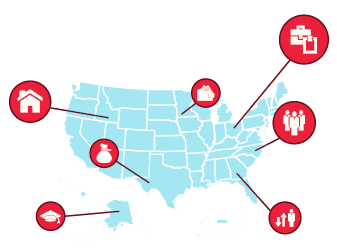
The BEAD Broadband Availability Map, hosted within the secure NBAM platform, reflects data from the FCC’s National Broadband Map with an overlay of the BEAD definition of reliable broadband. This map enables NTIA to better understand where unserved and underserved broadband serviceable locations are across the country.
- The Permitting and Environmental templates created using public sources allow NBAM users to understand their potential permitting and environmental and historic preservation requirements for broadband projects. The templates are not exhaustive and are meant to be an initial starting place to identify what may be required for a potential project.
- The Eligible Entity Planning Toolkit includes multiple capabilities that directly support Eligible Entities in completing their BEAD Initial Proposal requirements. This toolkit allows users to obtain the total number of unserved and underserved locations based on a select version of the FCC’s National Broadband Map, identify potential broadband serviceable locations recently funded by other federal grant programs and explore the cost to deploy broadband to unserved and underserved locations in each Eligible Entities’ jurisdiction. The toolkit is hosted within the secure NBAM platform and is only available to Eligible Entities.
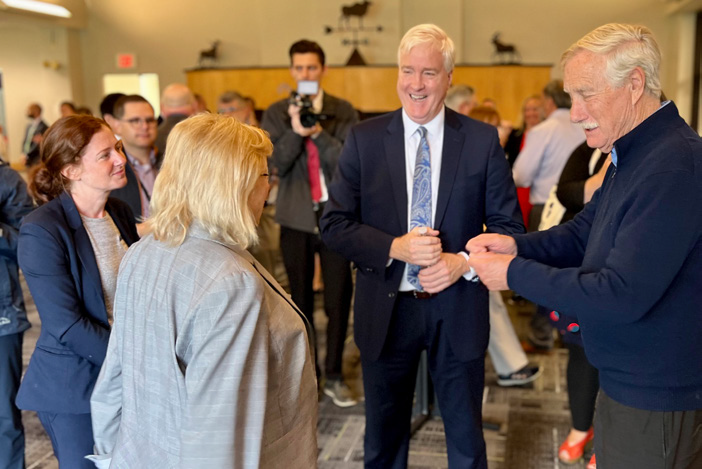
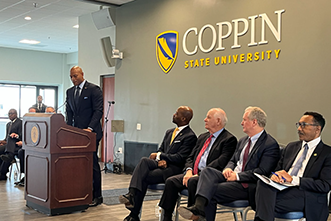
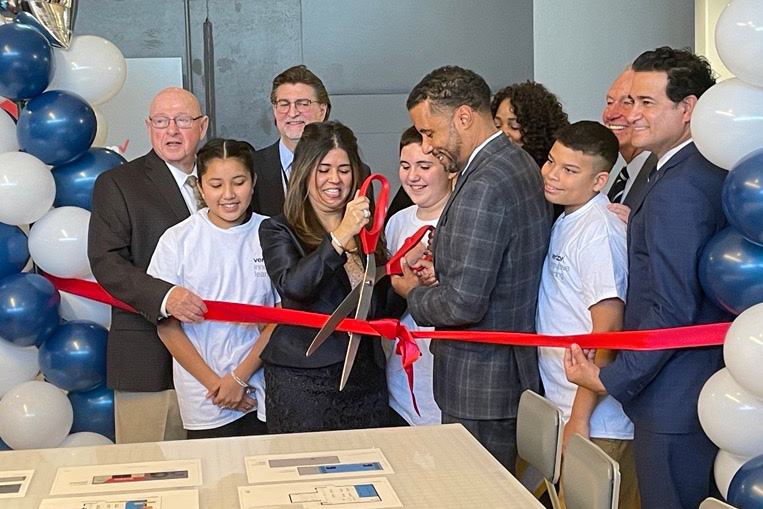
Under the requirements for the BEAD and Digital Equity programs, states and territories are required to coordinate with a variety of stakeholder groups and must document their local coordination and outreach activities. NTIA supported 17 state and territory broadband offices in meeting this requirement by co-hosting day-long workshops to convene key stakeholders from the state or territory, local governments, community groups, and industry. These workshops were intended to open lines of communication between the state and territories and local stakeholders as they conducted programmatic planning. The events were also meant to launch a process for ongoing communications, outreach, engagement, and coordination strategies with these stakeholders in the development of these plans.
NTIA outlined the following requirements to jointly co-host these workshops with the state and territory broadband offices:
- Secure the support of the state’s county, municipal and/or township associations.
- Build an inclusive invite list.
- Develop a relevant agenda.
- Create an event that encourages participation.
- Maintain ongoing communication.
Between August 2022 and July 2023, NTIA co-hosted local coordination events in 16 states and in the U.S. Virgin Islands with 48 different co-hosts. NTIA offered to co-host events with all state broadband offices and were able to host these 17 events due to interest and logistics. Additional states held similar events and while NTIA was not a co-host, NTIA did participate when invited. Altogether, these engagements connected NTIA with thousands of local and regional broadband stakeholders with representation from the following key partner groups: federal, state, and territory government, Tribal corporations/communities, academic institutions, community development groups, nonprofit organizations, telecommunications service provider and equipment industry members, media, and others. These events covered a range of topics and panels including: Workforce Development, Planning for Connectivity, Local Coordination: How to Get Involved, Telehealth, Why Digital Equity Matters, Strategies for Broadband Infrastructure Development, State Broadband Office Overview, Mapping Update, Tribal Coordination and more.
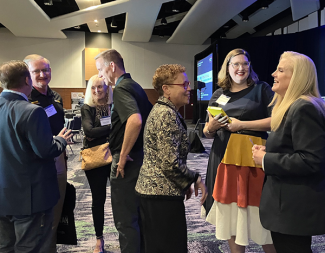
In 2023, NTIA also held over 4,000 stakeholder engagements. An engagement is when NTIA interacts with one or more external stakeholders in one of any number of events, including one-on-one meetings, Tribal consultations, public webinars, speaking at a national conference, and many others. NTIA staff participated in approximately 600 public speaking engagements, where NTIA staff were given an opportunity to educate, inform, and promote awareness of the Internet for All programs and other OICG activities. Staff held over 3,200 group sessions, which are planned, real-time gatherings with individuals from one or more external organizations to offer stakeholders the chance to meet NTIA representatives and ask questions, give feedback, or share experiences related to broadband connectivity and deployment amongst the individuals or groups they represent. Additionally, NTIA held more than 140 listening sessions for NTIA representatives to attend and listen as individuals or organizations expressed their views, challenges, needs, and ideas related to ensuring everyone in their area has access to affordable, reliable, high-speed Internet.
Impact of Local Coordination Events
The following outlines the impact of the 17 local coordination events NTIA co-hosted.
5,045
Stakeholders Engaged
24
Technical Assistance resources shared
5
Federal partners that participated as presenters
Several of these events are featured in-depth in the State Pages.
State Broadband Leaders Network
The State Broadband Leaders Network (SBLN) is a community of practitioners who work on increasing Internet deployment and access at the state level. OICG coordinates the group and convenes participants to share priorities and best practices, discuss emerging telecommunications policy issues, link states and local jurisdictions to federal agencies and funding sources, and address barriers to collaboration across states and agencies. OICG also worked with the SBLN to deliver technical assistance in support of states and territories participating in the BEAD and Digital Equity programs. This included facilitating interactions with communities, businesses, and organizations at the state and local levels.
In 2023, SBLN hosted two in-person summits and 26 virtual meetings, including bi-monthly virtual meetings and ad hoc special topic sessions. OICG hosted the 2023 Winter SBLN Summit at its headquarters in Washington, D.C., and brought together 141 state and territory broadband staff from 51 states and territories to share priorities, receive technical assistance, and discuss best practices and emerging telecommunications policy issues. OICG held the 2023 Summer SBLN Summit in Indianapolis, Indiana, and brought together 187 state and territory broadband staff from 51 states and territories. This event focused on technical assistance of the Digital Equity and BEAD Programs and the submissions of required documentation, specifically requirements associated with the announcement of BEAD state allocation amounts and next steps with the Initial Proposals as well as the submission of State and Territory Digital Equity Plans. In addition to the summits and virtual meetings, OICG delivered approximately 30 weekly newsletters for SBLN participants. These newsletters, “SBLN Scoop,” were sent via email to SBLN and NTIA staff and include information on programmatic updates, new Technical Assistance resources, details about upcoming events, and external resources and events that might be of interest to the SBLN.
Digital Equity Leaders Network
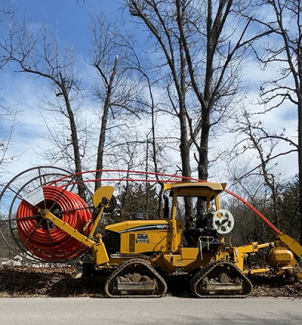
The Digital Equity Leaders Network (DELN) is a community of practitioners focused on increasing digital equity, digital inclusion, and access at the local, county, state, regional, and community levels. Participants include primarily government staff from local, regional, Tribal, and state digital equity and broadband offices. DELN provides a monthly forum to strengthen policy and program connections among local and state jurisdictions and federal agencies to improve funding coordination, align policies and strengthen collaboration across stakeholders. In 2023, the DELN hosted 15 virtual meetings representing 390 local, regional, state, and Tribal governments.
DELN hosted joint meetings throughout 2023 with SBLN and the Tribal Broadband Leaders Network (TBLN) to encourage cross network engagement and best practice sharing with other cohorts. In addition to the virtual meetings, DELN hosted Deep Dive sessions focused on specific digital equity topics raised by attendees. These topics included digital equity in rural and smaller communities, health equity and digital equity, digital equity in Tribal communities, and a series of DELN sessions focused on covered populations. From these meetings, OICG developed Technical Assistance resources to help digital equity leaders understand issue areas, provided federal, state, local, and national resources, and examples of best practices that can help digital programs as they develop their programs. NTIA staff also created the monthly “DELN Download” newsletter which featured meeting topics, resources, news articles, and events on digital equity. As a result of these efforts, NTIA staff completed 40 “digital equity scans” of local cities and counties and created a digital equity contact directory to help attendees connect with each other.
Tribal Broadband Leaders Network
The Tribal Broadband Leaders Network (TBLN) is a community of Tribal practitioners dedicated to expanding connectivity on Tribal lands. The TBLN allows NTIA to receive ongoing feedback on the TBCP and provide pre- and post-award technical assistance support for NTIA’s grant programs, including those not specifically focused on Tribal governments. The TBLN connects Tribal leaders and their staff across the country to address common barriers and present potential solutions and best practices; discuss emerging telecommunications policy issues; and identify engagement strategies with state broadband leaders. OICG also sent out the monthly Tribal Broadband Newsletter to the TBLN which featured meeting topics, notes from the previous meeting, Tribal resources, and upcoming events. The TBLN hosted its first in person Summit in Phoenix, Arizona, in March 2023, with over 200 Tribal Broadband Leaders in attendance. This forum provided a space for Tribal entities to interact with OICG and other Tribal broadband leaders from across the country.
Federal Funding Workstream meetings
NTIA hosted over 20 Federal Funding Workstream (FFWS) meetings in 2023, bringing together over 20 federal agencies with broadband initiatives to share and learn about the work being done to expand high-speed Internet access. NTIA co-chairs the FFWS with the United States Department of Agriculture (USDA). Coordination and collaboration to achieve Internet for All require timely and accurate knowledge and data about federal broadband funding programs to inform decision making. After each meeting, NTIA drafted an email summarizing the updates, which was shared with representatives from over 20 federal agencies, the Office of Management and Budget (OMB), and other Executive Office of the President staff. These interagency updates are also shared with NTIA’s FPOs and other NTIA staff, who use the information in their engagements with State Broadband Offices (SBOs).
Interagency Stakeholder Engagement
OICG invited its interagency partners to participate in SBLN Winter and Summer Summits, virtual meetings, and Office Hours for SBOs to learn about updates to federal programs and additional funding sources. Over the course of the year, NTIA FPOs facilitated hundreds of meetings with interagency partners including USDA, the FCC, United States Department of Treasury, Economic Development Administration, and many others to promote local engagement and help states and local communities learn how to blend various sources of federal funding, leverage federal resources regarding cybersecurity, workforce development, telehealth and begin to coordinate with federal agencies involved in permitting.
Through 2023, OICG also continued to engage with industry, unions, community organizations, and workforce training providers to create a diverse broadband workforce. This engagement also helps to prepare the domestic supply chain to support infrastructure deployment projects and prepare Internet Service Providers (ISPs) to pursue BEAD network deployment grants to foster a competitive process that will result in the best and most affordable service for all consumers. These efforts can be seen in NTIA’s Communications Supply Chain Risk Information Partnership (C-SCRIP) that helps identify potential risks for local providers and suppliers so they can make informed investment decisions, helping to stabilizable the domestic supply chain and prevent future “rip and replace” programs.
To meet the workforce needs of the Internet for All programs, OICG continued to inform states, territories, and industry stakeholders on best practices to develop a skilled, diverse workforce for high-speed Internet deployment projects. OICG conveyed this information through the release of the Workforce Planning Guide that provided strategies to meet BEAD program requirements, examples, and next steps for establishing a diverse broadband workforce. In addition to the Guide, OICG developed workforce-focused technical assistance resources for BEAD Eligible Entities, including state-specific workforce data analysis that supported Eligible Entities as they anticipate potential labor gaps and a childcare resource which provides strategies and best practices to promote childcare access to reduce barriers to employment in telecommunications. OICG convened a panel of industry associations during the 2023 Summer SBLN Summit to address emerging workforce and permitting topics to support BEAD implementation. In early 2023, OICG also launched a monthly industry newsletter to deliver critical Internet for All programmatic updates, new technical assistance materials, and information on upcoming events.
The Build America Buy America (BABA) Act, enacted as part of the Infrastructure Investment and Jobs Act, established a domestic content procurement preference for all federal financial assistance obligated for infrastructure projects after May 14, 2022. The domestic content procurement preference requires that all iron, steel, manufactured products, and construction materials used in covered infrastructure projects are produced in the United States. The U.S. Department of Commerce is working with the OMB Made in America Office to coordinate compliance with these procurement requirements.
NTIA is strictly enforcing BABA requirements outlined in the Bipartisan Infrastructure Law (BIL) and the Internet for All NOFOs. On August 22, 2023, NTIA published a limited and targeted draft BABA waiver for the BEAD Program. This proposed waiver was the result of months of careful analysis of market conditions and sustained outreach to industry and stakeholders. The draft waiver was open to public comments for 30 days and closed on September 21, 2023. NTIA received comments from 66 unique stakeholders including manufacturers, Internet service providers, trade associations, and labor groups. Following several months of additional analysis, research, and engagement, NTIA released the final version of the Buy America waiver for the BEAD Program on February 23, 2024. This limited waiver proposes a firm approach to enforcing BABA requirements while balancing the realities of complex supply chains. This limited waiver has already spurred $100 million in new domestic manufacturing investment and the creation of thousands of new jobs. It’s NTIA’s expectation that this domestic Investment will continue following the release of the final draft of the waiver.
On April 19, 2023, NTIA issued a BABA waiver for the Middle Mile Grant program. In drafting the waiver, NTIA reviewed and addressed the 11 comments received during the public comment period. The waiver is effective for the period of performance of all Middle Mile program grants awarded from March 1, 2023, until March 1, 2024, beginning on the date of issuance for each award.
The investment in broadband infrastructure combined with the BABA requirements has spurred many companies to expand or move manufacturing and jobs to the United States. In 2023, communities across the country are seeing these investments up close, some are listed in the state pages in the following section. A selection of these investments is listed below as well as captured in this map:
- In March, Corning officially opened its newest optical cable manufacturing campus in Hickory, North Carolina, which will help accelerate U.S. buildouts of high-speed fiber broadband networks. This campus will add hundreds of jobs to Corning’s existing North Carolina workforce of more than 5,000.
- In June, Prysmian invested $30 million to transition its Jackson, Tennessee, plant from copper cables to fiber-optic cable. Prysmian remained dedicated to its workforce, retaining nearly 90 percent of employees. Prysmian expects to hire an additional 40 workers to meet the projected demand for fiber-optic cable driven by the BEAD Program.
- At an August event in Kenosha, Wisconsin, Nokia announced that it will move production of key fiber-optic broadband electronics to the United States to comply with the Buy America requirements. This investment will result in up to 200 new workers being hired.
- In August at their global HQ in Huntsville, Alabama, Adtran announced it will expand domestic production of key broadband electronics and move additional manufacturing from Asia back to the United States. This is expected to result in the creation of close to 250 new jobs in Huntsville.
- In November, Belden's PPC Broadband Solutions Business announced an investment of nearly $10 million to reshore production of fiber-optic cable to their Syracuse, New York facility. This reshoring will drive close to 200 new jobs in central New York.
- In November, Ciena announced an investment in U.S. electronic manufacturing to support BEAD-funded projects. This investment will drive close to 200 new jobs.
NTIA reviewed and addressed the 11 comments received during the public comment period.

Implementation: Partnering in the Field (Part II)
12 See 88 Fed. Reg. 13101, March 2, 2023.
13 See National Telecommunications and Information Administration, BEAD Challenge Process, Policy Notice, April 2023.
14 See 88 Fed. Reg. 42918, July 7, 2023.
15 See 88 Fed. Reg. 36282, June 2, 2023; See November 2023 NTIA Internet Use Survey Draft for Public Comment
16 See Interagency Agreement Between The Federal Communications Commission, U.S. Department Of Agriculture, And The National Telecommunications And Information Administration Of The U.S. Department Of Commerce, June 25, 2021; MOU between The Federal Communications Commission, U.S. Department Of Agriculture, And The National Telecommunications And Information Administration Of The U.S. Department Of Commerce, and the U.S. Department of the Treasury, May 9, 2022.
